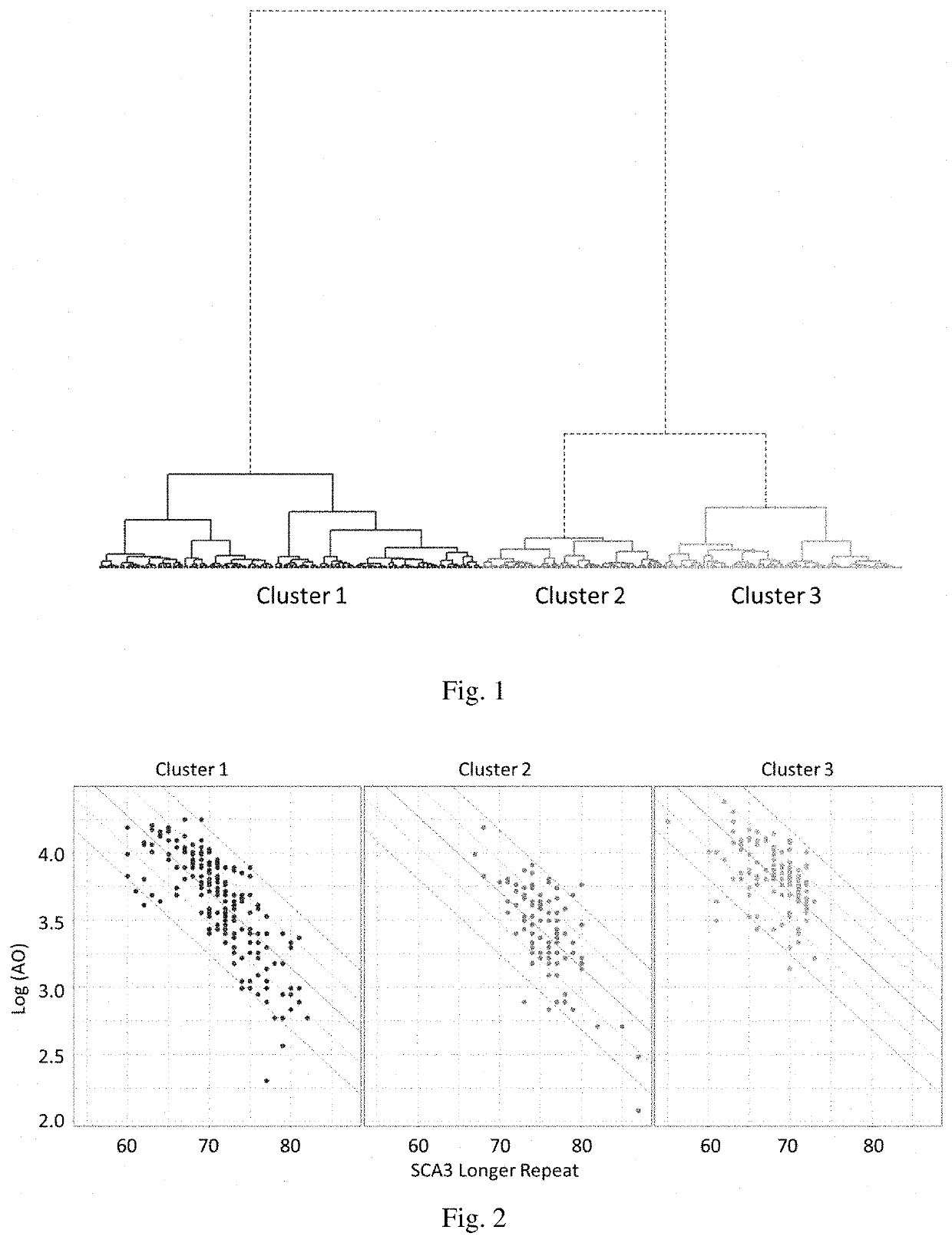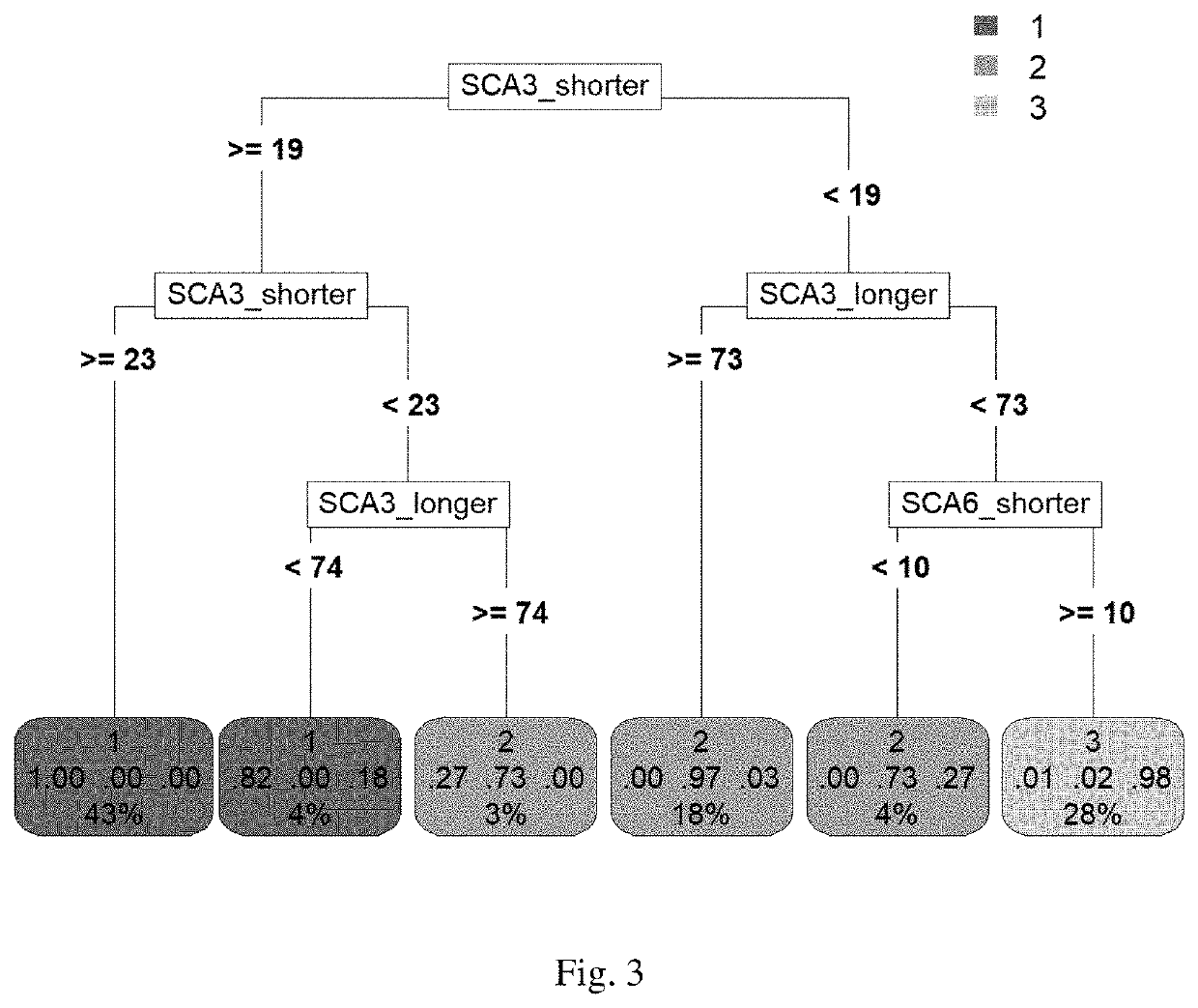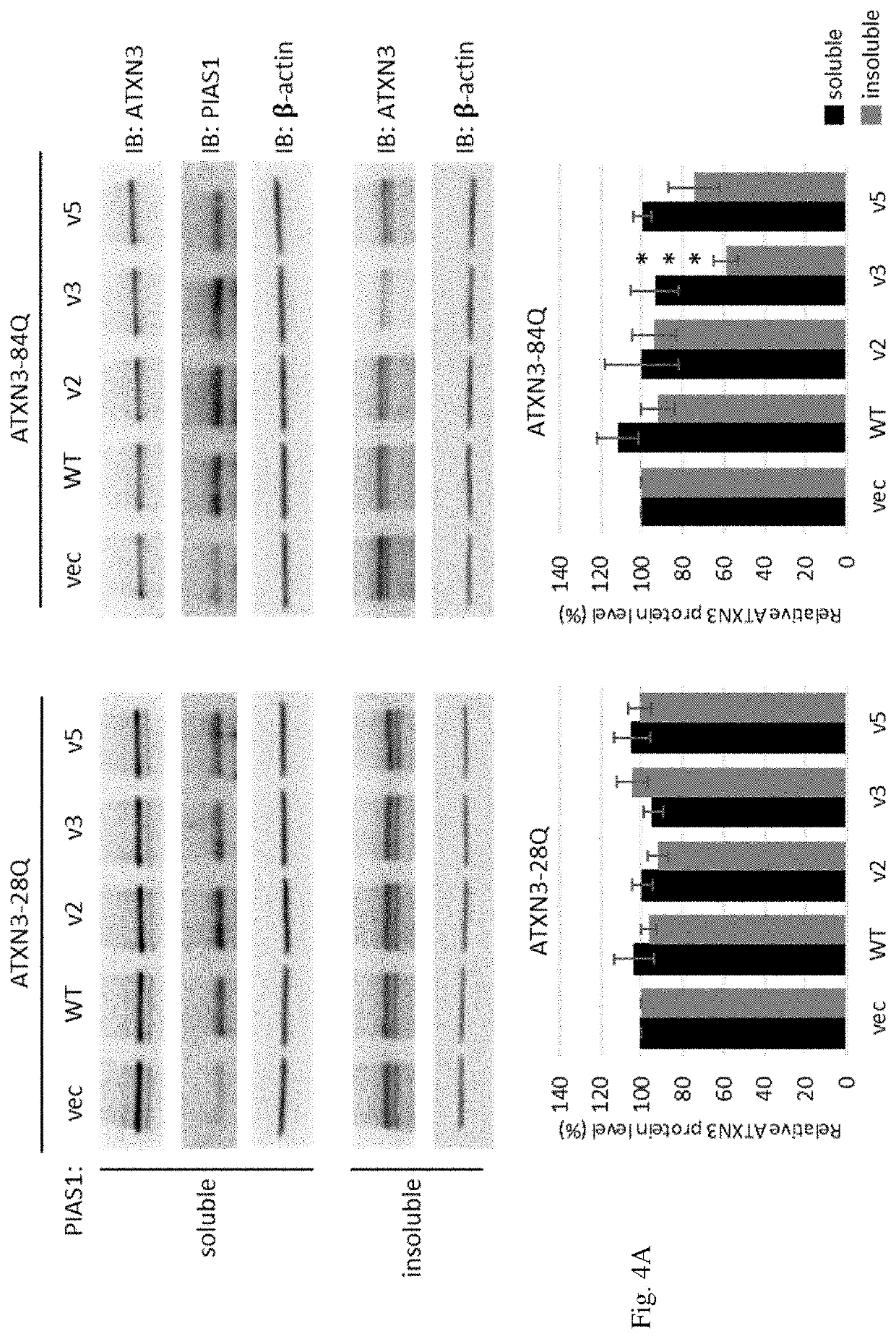Methods for identification of genetic modifiers and for treating nucleotide repeat disorder
a technology of nucleotide repeat and gene modification, which is applied in the field of nucleotide repeat disorder treatment, can solve the problems that biological therapy or chemical agents both fail to achieve sufficient effects, and achieve the effects of reducing the formation of foci, increasing cell lethality, and increasing protein aggregation
- Summary
- Abstract
- Description
- Claims
- Application Information
AI Technical Summary
Benefits of technology
Problems solved by technology
Method used
Image
Examples
example 1
Identification of Genetic Modifiers of Nucleotide Repeat Disorders
[0134]To identify the genetic modifiers of polyQ diseases, we measure the CAG repeats of seven polyQ disease causing genes for each polyQ disease patient first. These genes are: ATXN1, ATXN2, ATXN3, CACNA1A, TBP, ATN1 and HTT, which are the disease-causing genes for SCA1, SCA2, SCA3, SCA6, SCA17, DRPLA and HD, respectively. While the numbers of CAG repeat in both alleles of each disease-causing gene are available, we perform a clustering analysis with Euclidean distance and Ward's method for a cohort of 361 SCA3 patients based on these repeat numbers. The resultant dendrogram is shown as FIG. 1.
[0135]As shown in FIG. 1, there are three main clusters, of which two were separated from the same branch. While we illustrate the data as a regular scatter plot (FIG. 2), where x-axis represents the numbers of CAG repeat in patients' disease alleles and y-axis corresponds to the natural logarithm of patients' ages at onset, th...
example 2
Effect of PIAS1 Variants on ATXN3
[0137]SCA3 is attributed by the expression of mutant ATXA3, which encodes a protein containing a long stretch of polyQ track that is aggregation-prone and detrimental to cells. In order to characterize the effect of PIAS1 gene variants on ATXN3, cells expressing either normal ATXN3 (ATXN3-28Q) or mutant ATXN3 (ATXN3-84Q) were introduced with wild-type PIAS1 and PIAS1 gene variants. We found that PIAS1 gene variant 3 (Pias1S510G, v3) does not affect ATX3 gene expression at RNA level, but it causes a substantial reduction of mutant ATXN3 in the insoluble fraction of protein lysates (FIG. 4 (A)). Typically, insoluble fraction of mutant ATXN3 has a propensity for protein aggregation or foci formation that is harmful to cells. When PIAS1 gene variant 3 was introduced into murine neuronal cells expressing EGFP-ATXN3-84Q, it resulted in a decrease of foci formation as compared to cells expressing wild-type PIAS1 (FIG. 4 (B)). Accordingly, the elevated cell ...
example 3 pias1
Knockdown Reduces ATXN3 Level
[0138]It is not known whether PIAS1 has a regulatory role in ATXN3. To this end, cells expressing ATXN3 were subjected to PIAS1 shRNA knockdown by different doses of shRNA, and analyzed the protein level of ATXN3. Our results showed that the mutant ATXN3 protein levels were reduced in a dose dependent manner when PIAS1 knockdown, especially the ATXN3 proteins in insoluble fraction (FIG. 5 (A)). Besides, MG132 prevents the reduction of ATXN3-84Q caused by PIAS1 knockdown and the mutant protein in the insoluble fraction is most stabilized by MG132. This imply that PIAS1 can stable ATXN3 proteins and prevent ATXN3 degradation by proteasome. In line with this notion, ATXN3 protein half-life reduced due to the protein stability reduced when PIAS1 knockdown (FIG. 5 (B)). PIAS1, a SUMO E3 ligase, regulates a variety of proteins through its SUMOylation activity. While Huntington's disease protein has been identified as a substrate of PIAS1, it is not known wheth...
PUM
| Property | Measurement | Unit |
|---|---|---|
| Length | aaaaa | aaaaa |
Abstract
Description
Claims
Application Information
 Login to View More
Login to View More - R&D
- Intellectual Property
- Life Sciences
- Materials
- Tech Scout
- Unparalleled Data Quality
- Higher Quality Content
- 60% Fewer Hallucinations
Browse by: Latest US Patents, China's latest patents, Technical Efficacy Thesaurus, Application Domain, Technology Topic, Popular Technical Reports.
© 2025 PatSnap. All rights reserved.Legal|Privacy policy|Modern Slavery Act Transparency Statement|Sitemap|About US| Contact US: help@patsnap.com



